7 Sample Toileting IEP Goals
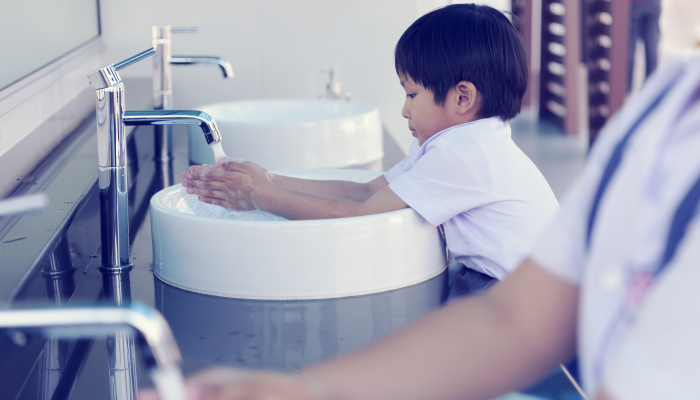
- Setting goals with an IEP gives both students and teachers something specific to aim for.
- Before setting toileting goals, get a good idea of where the child is starting.
- Goals should be age-appropriate while keeping in mind the child’s functional abilities and special needs.
- Toilet training goals should be specific, measurable, attainable, relevant, and time-bound.
Toileting skills are one of the most important things that students can learn. Whether their ultimate goal is perfect toilet training and independence or maintaining dignity while using diapers during the school day, all children can and should get support and encouragement from their school teachers and assistants.
Making toileting IEP goals that are measurable, achievable, and promote independence is one of the best ways that teachers and parents can help students gain independence and maintain dignity in an educational setting.
Goal #1: Independent Toileting
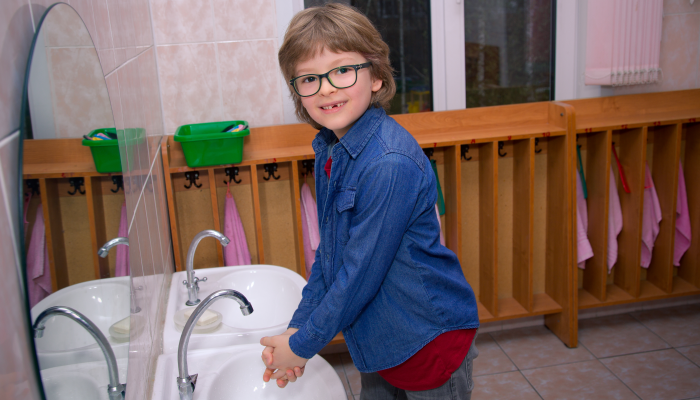
Children in need of an individualized education plan (IEP) have a wide range of abilities and need varying levels of toileting support. Some children simply need more time to become completely potty trained, while others with more severe disabilities may need lifelong toileting assistance.
A specific goal for independent toileting may look like this:
– Student will independently go to the bathroom when needed, with a success rate of 90% across two consecutive weeks.
Goal #2: Requesting Assistance
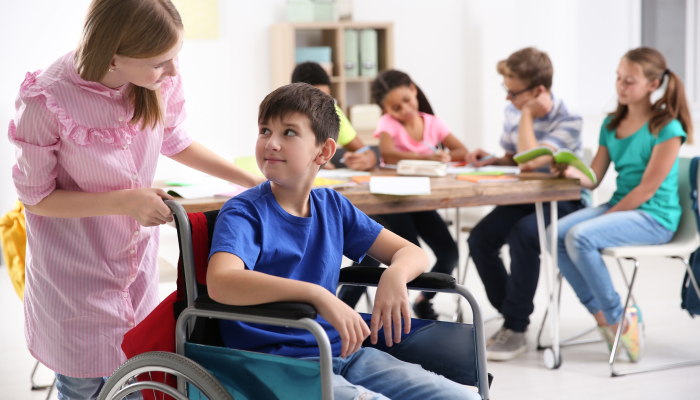
For students who do not have the functional abilities to use the bathroom independently, requesting assistance at appropriate times may be the next best option. Kids who have advanced enough communication to request assistance can speak, write, or use a communication device to tell their teacher when they need to be helped to the bathroom.
A specific goal for requesting assistance may look like this:
– Student will verbally request help or use a communication device to indicate the need for assistance with toileting in 8 out of 10 opportunities.
Goal #3: Managing Clothing
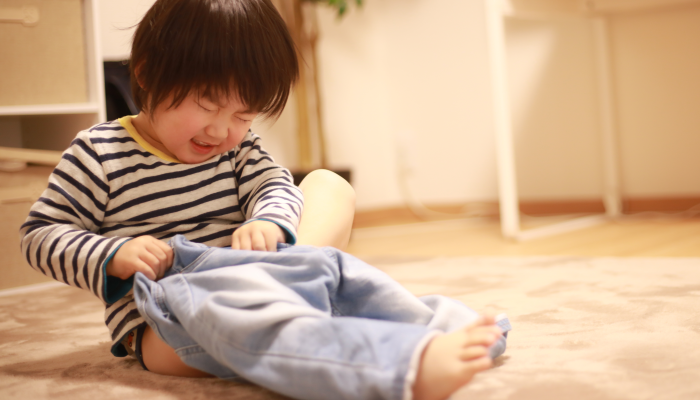
One of the most challenging parts of potty training for many preschool students or students with special needs is managing clothing. Zippers, buttons, sleeves, and even pull-ups can be challenging for many kids to deal with.
IEP teachers should assist the child only as much as is necessary and be patient while allowing the child to develop the skills needed to manage their clothing by themselves. While it does take more time, allowing children to dress themselves11. Vogelpohl, T. S., Beck, C. K., Heacock, P., & Mercer, S. O.. “”I CAN DO IT!”” DRESSING: Promoting Independence Through Individualized Strategies. Journal of Gerontological Nursing. 2021;22(3), 39–42. https://doi.org/10.3928/0098-9134-19960301-11 increases confidence which helps in all other areas of school and home life.
A specific goal for managing clothing may look like this:
– Student will independently manage clothing before and after toileting with 80% accuracy over one month.
Goal #4: Following a Toileting Schedule
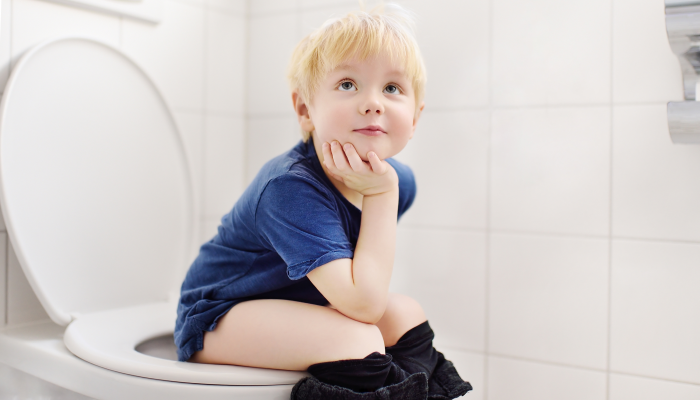
Many children who struggle to understand or express when they need to use the toilet benefit from following a toileting plan with a schedule. Experts at the Mayo Clinic22. Potty training: How to get the job done. Mayo Clinic. 2021. https://www.mayoclinic.org/healthy-lifestyle/infant-and-toddler-health/in-depth/potty-training/art-20045230 recommend that caregivers allow the child to sit on the toilet for a few minutes every two hours until they successfully urinate or pass stool into the toilet.
Parents and caregivers can adjust potty training schedules to fit the physical and cognitive abilities of a child.
A specific goal for following a toileting schedule may look like this:
– Student will follow a toileting schedule, successfully using the toilet at designated times with a 75% success rate over three weeks.
Goal #5: Hand Washing
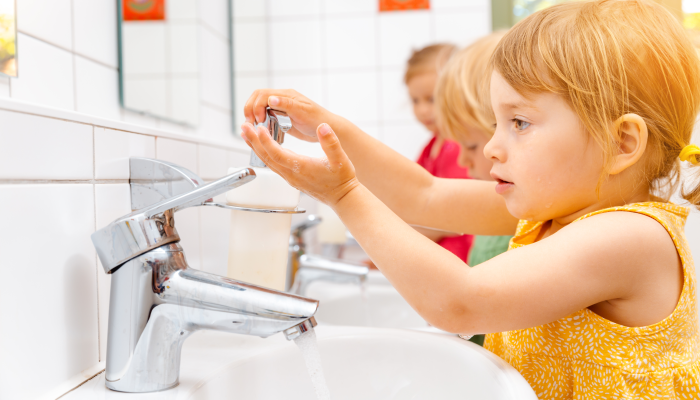
Even children who are fully potty trained often need reminders about washing their hands. Viruses and bacteria are easily spread through public schools, and hand washing is one of the best ways to prevent the spread of illness. In fact, the CDC33. Show Me the Science – Why Wash Your Hands? Centers for Disease Control and Prevention. 2023. https://www.cdc.gov/handwashing/why-handwashing.html#:~:text=Preventing%20sickness%20reduces%20the%20amount%20of%20antibiotics%20people,are%20prescribed%20unnecessarily%20for%20these%20health%20issues%2014. states that hand-washing can prevent up to 30% of diarrhea-related illnesses.
A specific goal for hand washing may look like this:
– Student will independently wash hands after toileting with soap and water, achieving a success rate of 85% over four weeks.
Goal #6: Dryness Checks
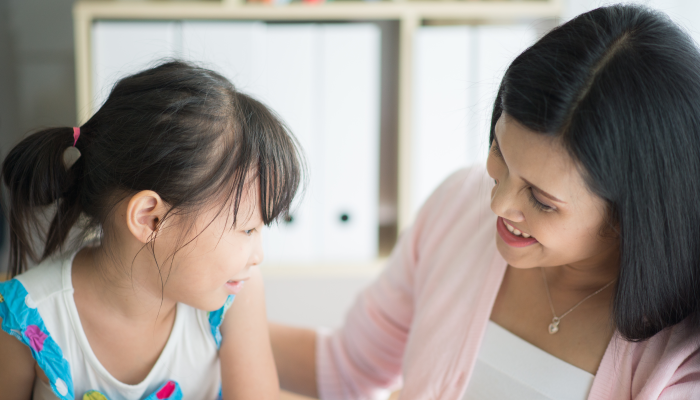
If children are completely incontinent, a goal of perfect toileting independence can be far too overwhelming. For these kids, participating in self-checks for dryness is a good place to start. Children without the functional abilities to control their bowels and bladder can still be involved in their own toileting by letting their caregivers know when they need to be changed or cleaned up.
A specific goal for dryness checks may look like this:
– Student will participate in self-checks for dryness and report any accidents to a teacher or aide within 10 minutes of occurrence, 90% of the time for a month.
Goal #7: Using Public Restrooms
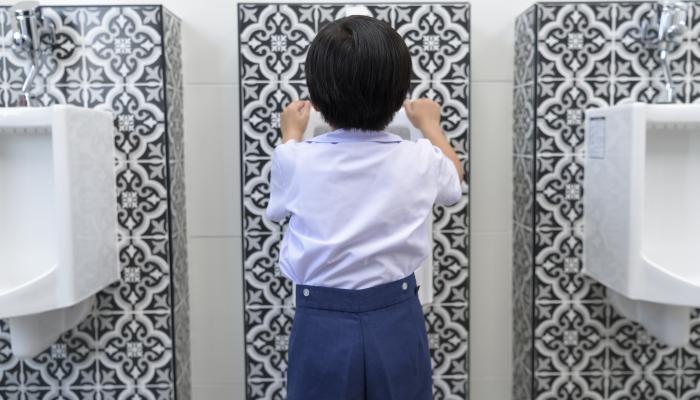
For children with a global developmental delay, using public restrooms may be a stressful experience. Children may struggle using public restrooms due to crowds, being in a new environment, or having to manage without comfort items or adaptive equipment that they have at home.
Accidents, behavior issues, or refusal to use the toilet are all common for many children when out in public. However, many children, even those with special needs, can get comfortable using the restroom in unfamiliar environments.
A specific goal for using public bathrooms may look like this:
– Student will use public restrooms when out in the community, demonstrating appropriate behavior and hygiene practices in 4 out of 5 community outings.
FAQs
How can I involve my child in setting their toileting IEP goals?
Parents should involve their children in developing their toilet training plan as much as possible. At the beginning of potty training, parents should assess their child’s motivation to use the restroom independently and be realistic about their child’s physical and cognitive abilities.
Children should never be shamed or embarrassed when they make a mistake or have an accident. Corrective action can include reminders, redirection, and changes to the IEP goals as necessary.
How can technology be utilized to support toileting IEP goals?
There are many tools available that can be used to support toileting IEP goals. Adaptive clothing can help children undress and dress themselves independently, timers or simple watches can be used as reminders for toileting schedules, and apps or games can be used as motivators to stick to a toileting plan.
What adaptive equipment can children use to reach their IEP goal?
Depending on the age and development of your child, there are many adaptive devices that can be used at school and at home. Bars or elevated seats can be used for children with mobility issues, large changing tables and mechanical lifting devices can be used for larger children who struggle with incontinence, and extra absorbent briefs or pads can be used for children with frequent accidents.
How can parents and educators track progress toward toileting IEP goals?
Many schools keep detailed records of children’s behavior and progress while they are participating in an IEP program. Parents and teachers should communicate frequently about progress being made or challenges during school.
It’s also important to include the children in tracking their own progress as much as possible. Children can benefit from being able to track their successes through reward systems like sticker charts, building a chain, or filling a jar with something when they meet their goals.
References
- Vogelpohl, T. S., Beck, C. K., Heacock, P., & Mercer, S. O. (2021). “I CAN DO IT!” DRESSING: Promoting Independence Through Individualized Strategies. Journal of Gerontological Nursing, 22(3), 39–42. https://doi.org/10.3928/0098-9134-19960301-11
- Potty training: How to get the job done. Mayo Clinic. (2021, December 11). https://www.mayoclinic.org/healthy-lifestyle/infant-and-toddler-health/in-depth/potty-training/art-20045230
- Show Me the Science – Why Wash Your Hands? Centers for Disease Control and Prevention. (2023, May 4). https://www.cdc.gov/handwashing/why-handwashing.html#:~:text=Preventing%20sickness%20reduces%20the%20amount%20of%20antibiotics%20people,are%20prescribed%20unnecessarily%20for%20these%20health%20issues%2014.
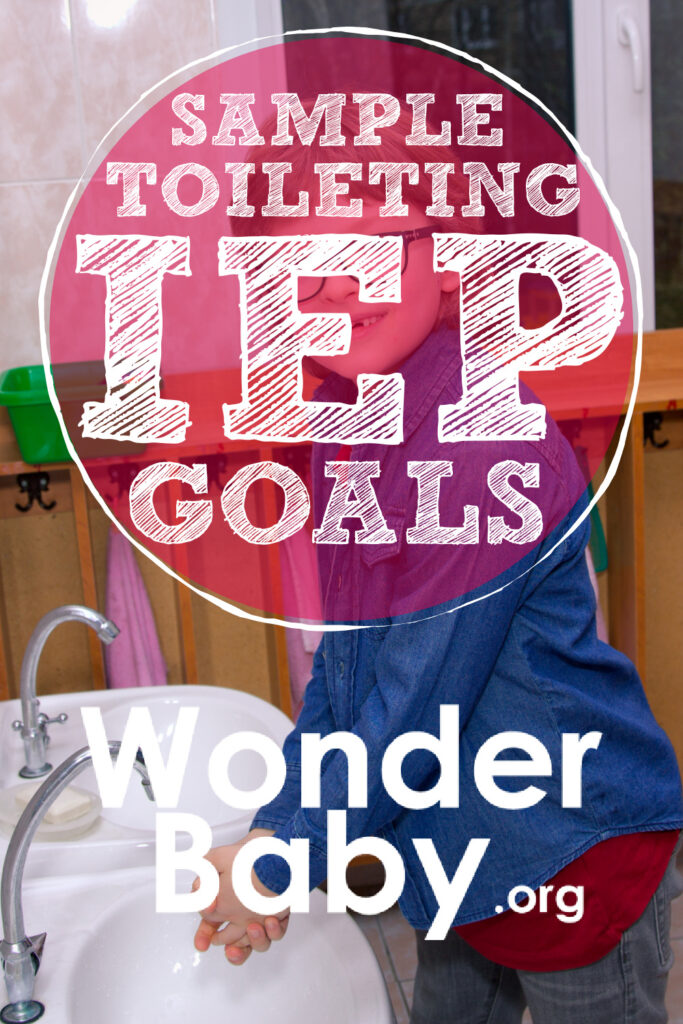
The information WonderBaby provides is not intended to be, and does not constitute, medical or other health advice or diagnosis and should not be used as such. Always consult with a qualified medical professional about your specific circumstances.
Related Posts
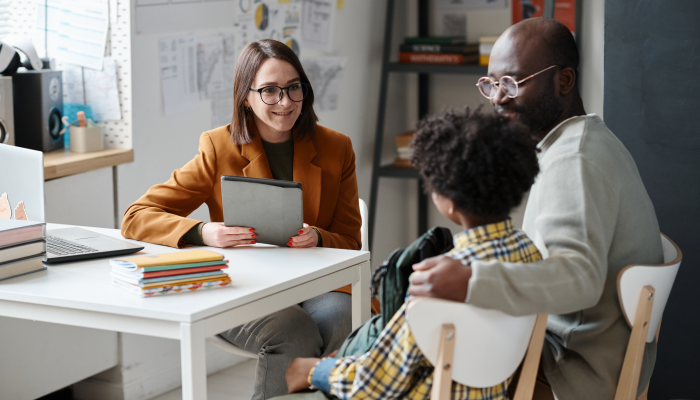
IEPs
What Should I Bring to My Child’s First IEP Meeting?
Prepare for your child's first IEP meeting with confidence! Discover exactly what documents to bring, including educational records, medical info, and questions to ask.
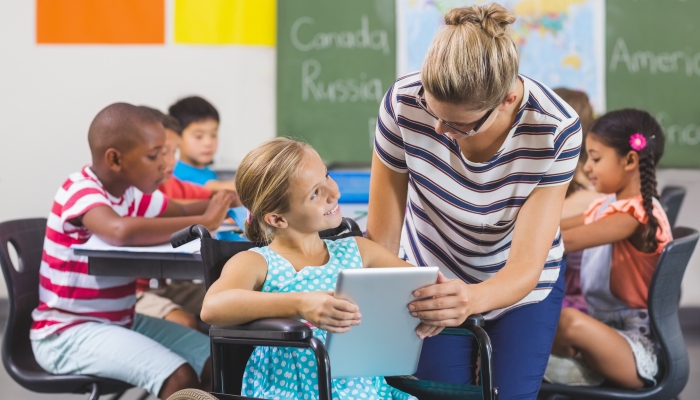
IEPs, Special Needs
What Is an Out-of-District Placement, and Who Needs One?
Learn all about out-of-district placement, which is ideal for a child whose individual needs are not met by their current school district.
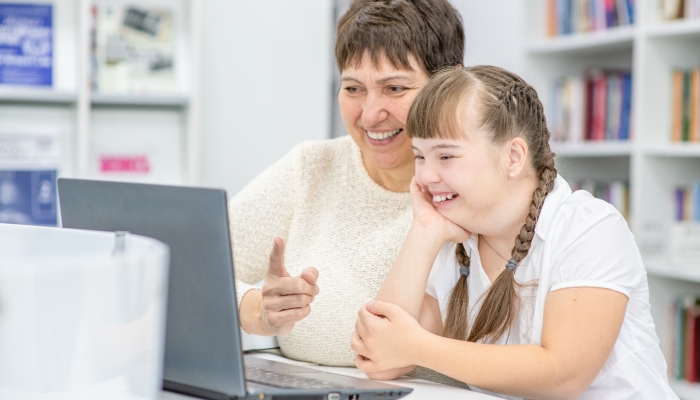
IEPs, Special Needs
5 Ways AI Can Benefit Special Needs Students
AI in special education classrooms can help create highly personalized experiences and improve inclusivity. Read about more benefits here!